|
Page 2 of 3
The Victory Arch
2501 West Avenue, Newport News, VA 23607
|
|
| |
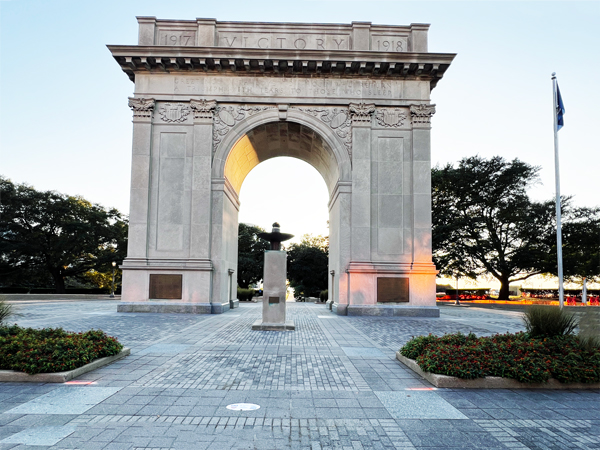 |
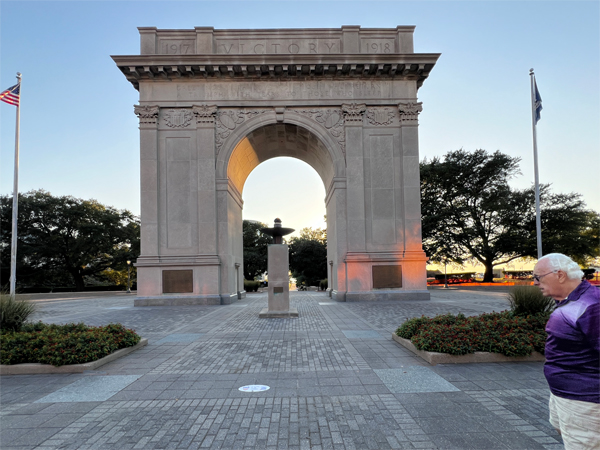 |
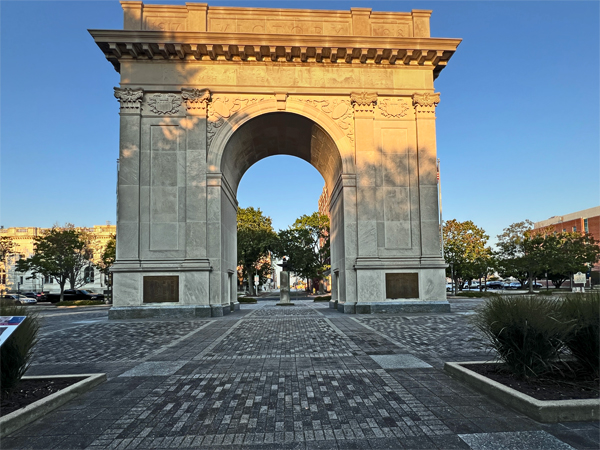 |
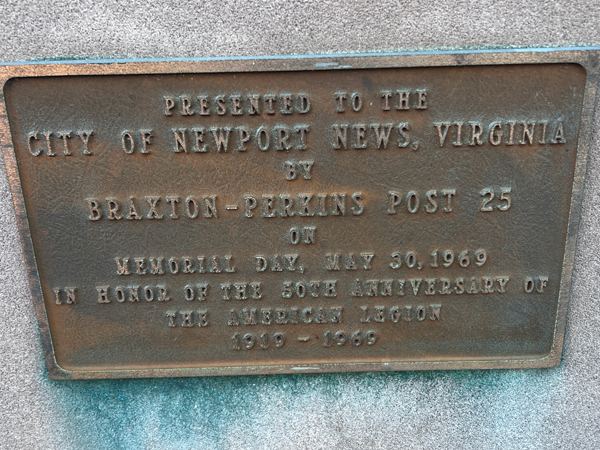 |
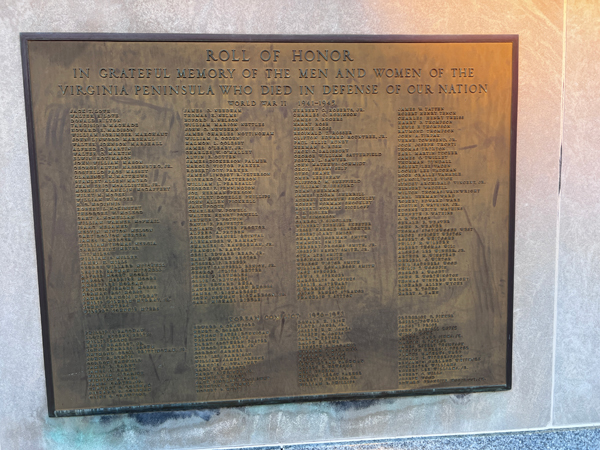 |
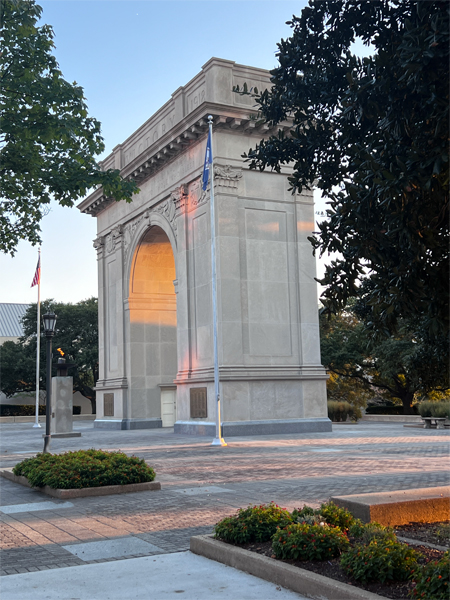 |
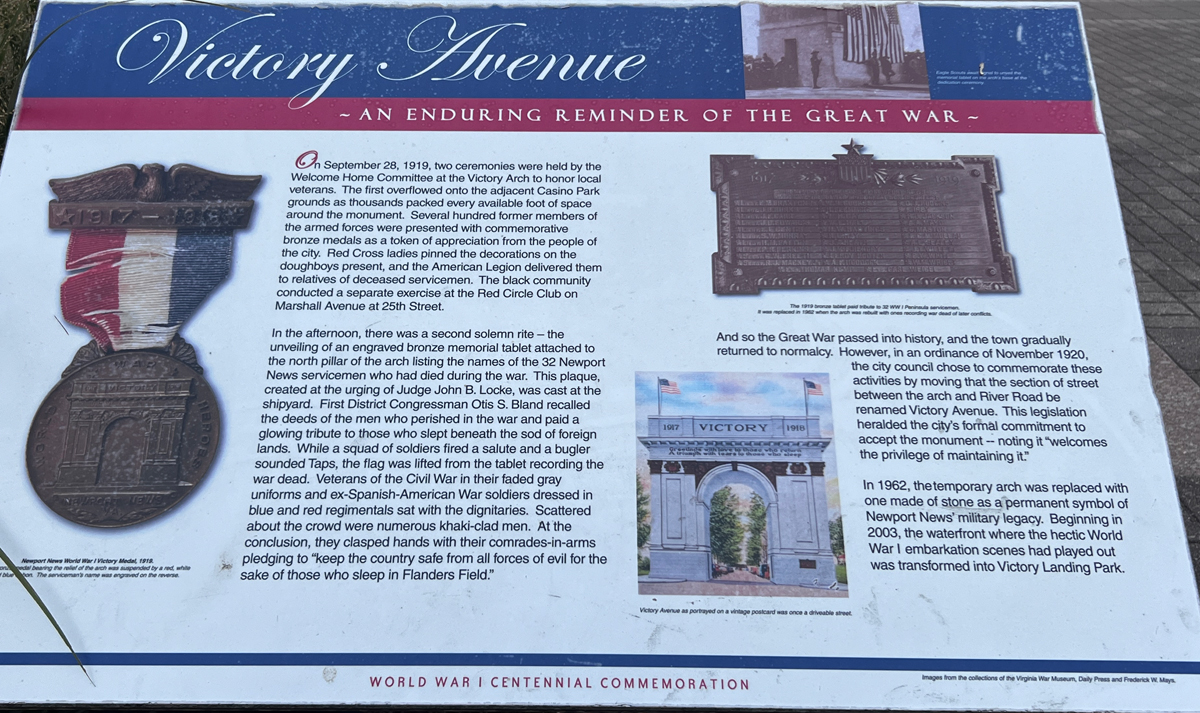 |
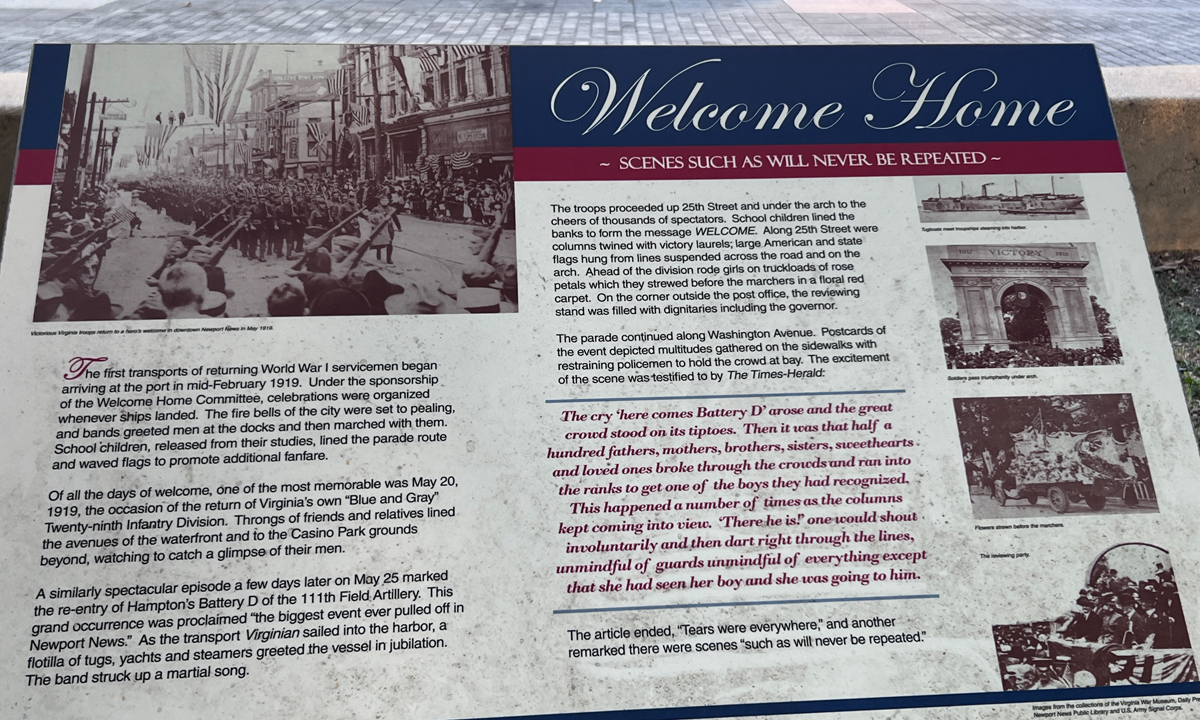 |
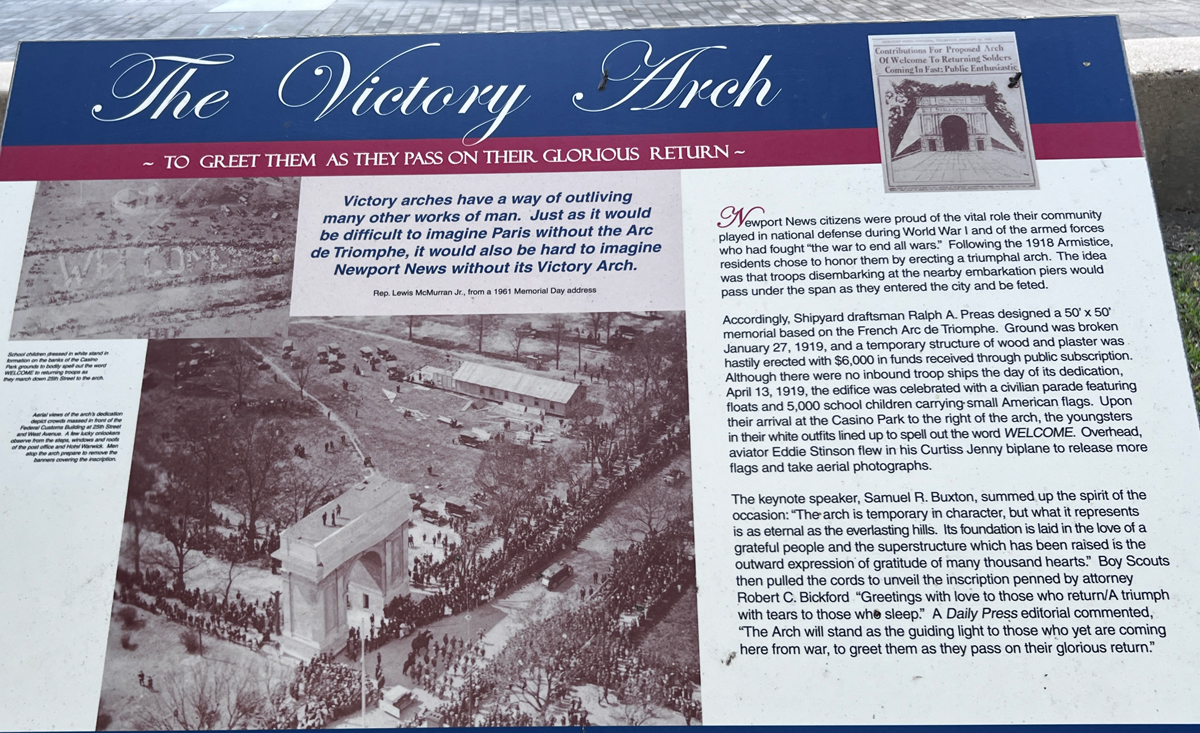 |
Below: History of The Victory Arch - 2501
West Avenue, Newport News, VA 23607 |
The Newport News Victory
Arch (or simply Victory Arch) is a monument in Newport News, Virginia,
erected first in 1919 and then rebuilt in 1962. The Victory Arch was
established as a memorial to those who served in the American armed
forces during periods of war. It is located on 25th Street and West
Avenue in downtown Newport News, near the Jessie M. Rattley Municipal
Center. |
 Building
the Arch Building
the Arch
|
| https://en.wikipedia.org/wiki/Newport_News_Victory_Arch |
Newport News served as a Port
of Embarkation for the American armed forces during World War I. Following
the Armistice, almost half a million American troops were set to return
to America via the ports of the city. Public desire to build an arch
was high, mimicking the erection of similar arches elsewhere in the
country. While many wished the structure to be permanent, the rate at
which soldiers were already returning made this unfeasible. It was then
decided to build a temporary arch, and to revisit the idea of a permanent
arch at a later date.
Funding was achieved through public subscription drives,
and work on the arch began quickly. The original building was hollow
- the framework was made of brick and wood, with stucco making up the
exterior. The arch was completed (mostly with volunteer labor) in April
1919. As troops returned to American soil, they were marched under the
arch. Initial crowds were small, but with the help of the city's Welcome
Home Committee, soon every ship full of soldiers was met by a large
crowd of local citizens. |
| |
|
The structure as built in
1919 was not expected to stand for more than two years — the time
it would take for Newport News to see its last returning soldier. The
arch ended up standing for over forty years. During that period, the
City Council for Newport News ended up appropriating more money for
maintenance of the arch — approximately seven thousand dollars
— than it took to build it originally. Although Newport News served
as a Port of Embarkation again during World War II, returning troops
did not march under the arch, in part because of its fragile condition.
The arch also suffered from the development of the city around it.
The area became subject to commercial development, so much so that at
one point each side of the arch sat on the property of a different gas
station. Passersby were subject to falling stucco and dangers from the
traffic pattern surrounding the arch that made it into a 50-foot tall
blind spot. Parts of the structure began to collapse after rotting through.
Calls to replace the "temporary" monument with a more permanent
structure came almost immediately. Attempts at securing federal funding
to construct a new arch proved unsuccessful. As a committee of veterans
and volunteers began to make fund-raising plans, there was some concern
from others in the community that they were attempting to replace a
"dead monument," and that a park, civic center, school, or
hospital would prove to be more functional and useful to the city's
citizens. Despite these protests, the necessary funds were collected
to complete the new arch, made of stone, and it was rededicated on May
30, 1962.
On Memorial Day, 1969, an eternal flame was donated by the American
Legion to the arch site. Standing fourteen feet high the eternal flame
which sits under the arch was cast in bronze by Womack Foundry, Inc.
(of Newport News) in the 1960s, and was hand crafted by the Foundry's
founder and president, Ernest D. Womack.
In 1973, the flame that had been established was ordered to be turned
off by then-City Manager William Lawson. The call to extinguish the
flame came during the oil shortage of that year. As one would expect,
this met with severe criticism and protest, especially from veterans'
groups. The solution provided by the city was to replace the flame with
a flashing light, which has been described as looking "absurd".[citation
needed] The flame remained unlit until Memorial Day, 1978. The flame
was threatened again the next year, when the new City Manager, Frank
Smiley, was looking for ways to cut expenses. The flame's cost (five
hundred dollars per month) was seen as a potential savings. Eventually,
a compromise was reached, and a new fuel line that burned less gas was
installed. The bill was reduced to sixty-five dollars a month. This
led Charlie Covington, the city treasurer, to remark, "Since there
are 670 names on Victory Arch plaques, that works out to about one third
of a penny per day per person. I'd hate like hell to come back and look
down and see Smiley has cut off the flame for a third of a penny per
day per person."
NOTE: Lee and Karen Duquette did NOT see a flame when they were here
in 2024. (Maybe they just missed it somehow?????) |
  |
Then Lee and Karen Duquette
took a walk down behind the Victory Arch where they found another statue
and took three different views of the statue. |
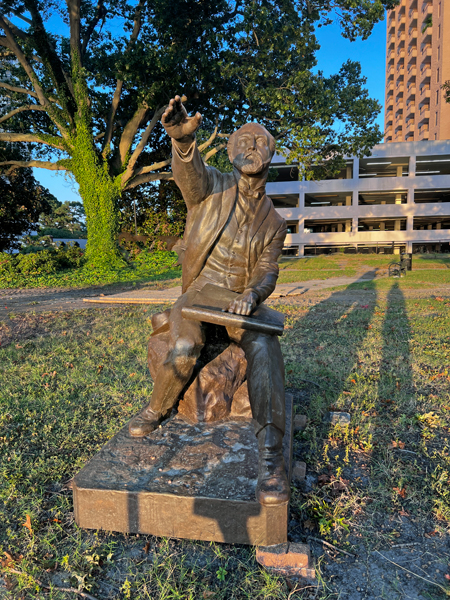
|
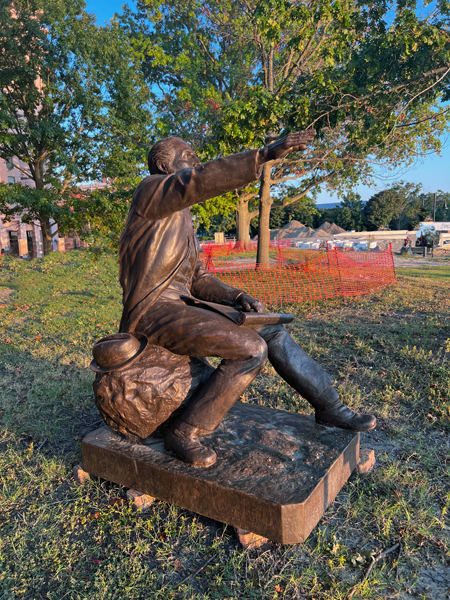 |
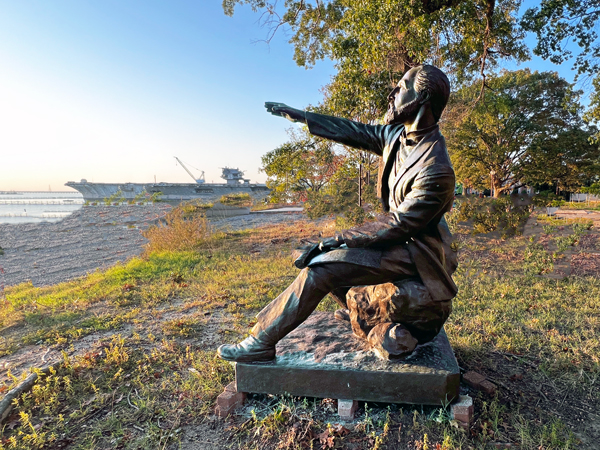 |
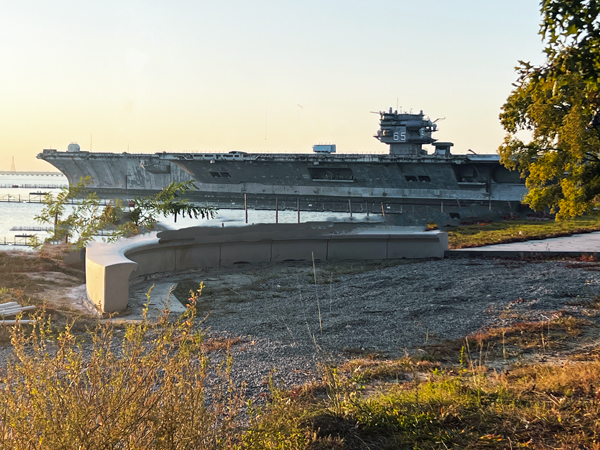 |
|
|
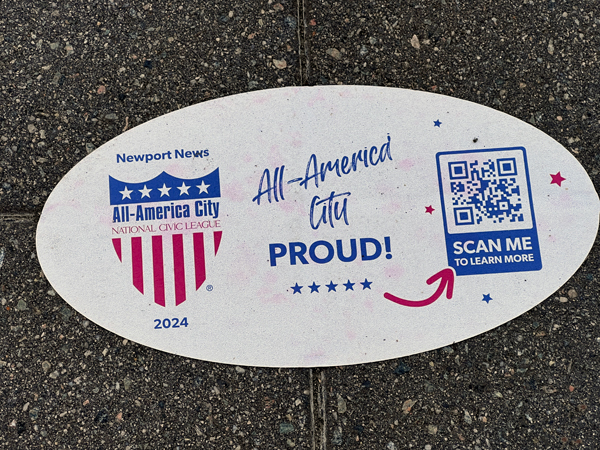
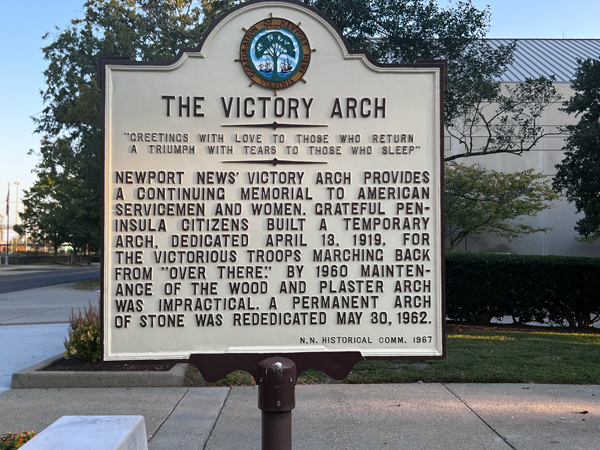












 Building
the Arch
Building
the Arch
 Continue on to more
Continue on to more